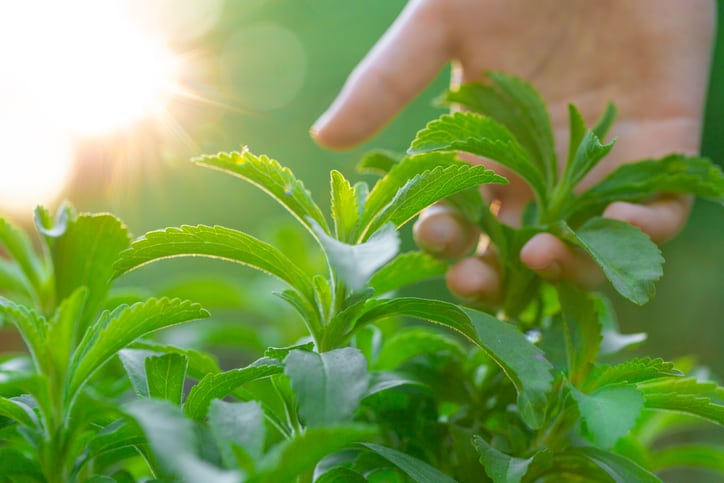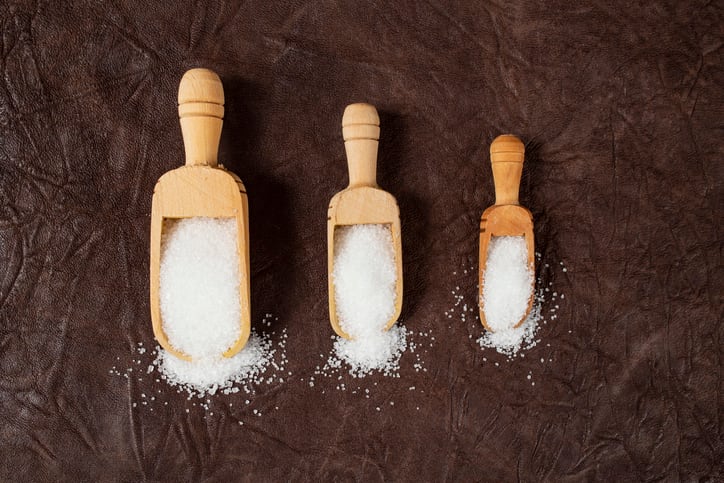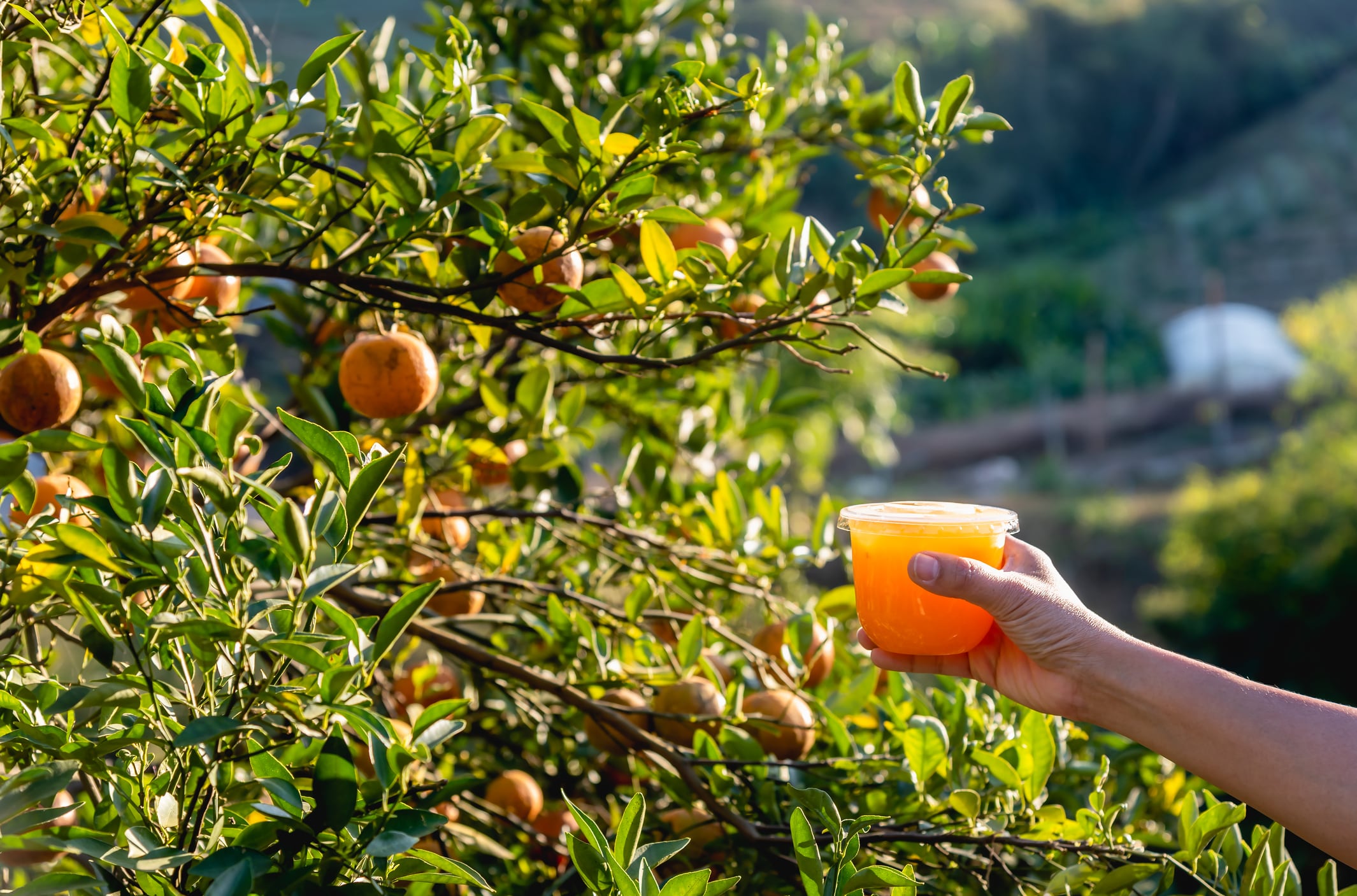In 2014, it looked like stevia had hit the big time. Coca-Cola, the world’s soda giant, had taken the sweetener on board and launched Coca-Cola Life with much fanfare. The mid-calorie drink was set to be the Goldilocks of soda: slashing to high sugar content of Coca-Cola, yet without going all the way to zero (and the accompanying artificial sweeteners) like Diet Coke, finding the perfect middle ground.
Sweetened with a blend of both cane sugar and stevia, with green branding that nodded to the natural source of the sweetener, the drink heralded a new generation of soda that ticked all the boxes: retaining the sweetness we know and love from soda, yet with less sugar and without artificial sweeteners.
But the drink never took off.
This left stevia in a strange place. While the sweetener might have lost its initial luster, researchers never lost their faith in its fundamentals. The potential of the sweetener in driving forward sugar reduction remained: and innovators continued to work tirelessly behind the scenes to develop new, improved versions.
And, in fact, a number of top beverage brands are using the sweetener today: just with far less fanfare than Coca-Cola Life.
So what do the fortunes of the sweetener look like now?
A growth market: stevia
Stevia, a plant native to South America, hit the limelight over a decade ago as formidable solution for sugar-reduction: with the natural sweetener some 200-300 times sweeter than sugar.
And today, the global stevia market is still on a steady growth trajectory, projected to climb from $1.4bn in 2025 to $2.5bn by 2035, with a CAGR of around 6.2%, according to data from Future Market Insights.
And there are no shortage of beverages using the sweetener.
In fact, beverages account for nearly 35% of stevia’s use by value, underscoring its central role in sugar-reduced drink innovation. And the beverage market is projected to grow at a CAGR of 6.8% through 2035.
This makes beverages the single biggest end-use category for stevia globally, ahead of other top sectors like tabletop sweeteners, dairy, or confectionery.
The macro trends that drove stevia onto the market in the first place haven’t really changed much over the last decade: in fact, they’ve become more important. Health-driven trends, from sugar taxes to diabetes concerns, are pushing drink makers worldwide to reformulate with plant-based, zero-calorie sweeteners, and stevia is still there as a frontrunner.
In other words, beverages are set to drive a disproportionate share of stevia’s growth. This makes sense; beverages are a high-volume category and often the first target for sugar reduction initiatives. Stevia’s performance in this segment over the next decade will largely answer whether it can truly crack the mainstream beverage market.
Use of stevia is growing... but it’s ‘not exactly a sugar rush’
As Nandini Roy Choudhury, Sr. Consultant, Food and Beverage, Future Market Insights, puts it: “Momentum for stevia in beverages is decidedly upward, though not exactly a sugar rush.”
“Early formulations mostly relied on Rebaudioside A (Reb A), the most common steviol glycoside, which was affordable but prone to bitterness at high concentrations.
“Today, there’s a clear shift toward high-purity glycosides like Reb M and Reb D that taste more like sugar with far less aftertaste. These next-generation stevia ingredients, often dubbed Stevia 3.0, have spurred a wave of product tweaks and new launches, albeit in a measured fashion rather than an overnight revolution."
Here, the stevia story comes back to Coke. Coca-Cola Life, a launch that loudly heralded a new age of stevia, didn’t work out. But much more subtle efforts directed at reformulation have worked. In 2023, Coke began blending a touch of stevia into the US Coke Zero formula. By late 2024, this tweak was rolling out nationwide.
“The change is subtle; the drink is still zero-calorie and primarily artificially sweetened; yet symbolically important,” said Choudhury.

“It shows even the giants are experimenting with stevia to improve taste or marketability.
“The fact that Coke felt confident enough in newer stevia extracts to incorporate them into a flagship brand is a positive signal for stevia’s momentum.
“This hybrid approach can help soften stevia’s entry into mainstream cola by pairing it with the consistency of legacy sweeteners.”
At the same time, private-label and upstart brands in the hydration and sports drink space have embraced stevia as a selling point.
“In Europe, for instance, retailers and brands are introducing electrolyte beverages, flavored water drops, and sports hydration drinks that tout plant-derived sweetening,” said Choudhury.
“One notable case is iPRO Hydrate, a UK-based sports drink now expanding in European markets. It is naturally sweetened with plant-based stevia and marketed as a healthy, sugar-free hydration option.
“After securing listings in major chains iPRO’s stevia-sweetened drinks are positioning to compete with traditional sports beverages. The brand highlights that it contains no artificial sweeteners, tapping into consumers’ clean-label preferences.
“This trend of stevia-sweetened hydration blends, from supermarket own brands to fitness-oriented startups, shows stevia’s moderate momentum: it’s increasingly common in new product formulations, but usually as part of a better-for-you niche rather than a sweeping replacement of sugar across the board."
Stevia champions
Stevia is generally used in a blend with sugar or other sweeteners. Brands using stevia include gut health superstars Olipop and Poppi; and modern soda pioneer Zevia (an early adopter whose name in fact comes from the word 'stevia').
Meanwhile, big guns using stevia include Keurig Dr Pepper's Bai and Starbucks Refreshers.
Can taste and mouthfeel challenges be overcome?
The biggest challenge for stevia in mainstream drinks has been its taste: particularly its lingering aftertaste and impact on mouthfeel (that’s another reason it’s commonly combined with another sweetener).
“Despite improvements with new glycosides, the stevia taste hasn’t completely vanished,” said Choudhury.
“Many consumers can detect a slight bitterness or licorice-like aftertaste, especially in products using earlier-generation Reb A extracts. This aligns with feedback that lingering bitterness is a known formulation challenge for stevia beverages.
“For context, sugar’s sweetness hits quickly and then cleanly disappears, whereas stevia’s sweetness tends to arrive slower and linger longer on the palate. That prolonged hang time can be perceived as a bitter or cloying finish if not expertly balanced. Beverage technologists often describe stevia’s sweetness curve as having a delayed onset and extended duration compared to sucrose meaning it doesn’t perfectly mimic sugar’s taste profile.
“Beyond pure taste, there’s also a mouthfeel difference. Replacing large amounts of sugar in a beverage not only removes sweetness but also reduces body and texture. Sugar contributes to the full mouth sensation of many drinks. Stevia, used in microscopic amounts, cannot by itself provide the bulk or viscosity that sugar does. This can make a diet drink feel thin or less rounded unless formulators add texturizers or bulking agents to compensate.”
Taste and mouthfeel, says Choudhury, remain the achilles heel for the sweetener.
“Taste hurdles are the primary factor keeping stevia from running away with the beverage market,” she said. “This is the reality check that tempers stevia’s otherwise strong appeal. The continued advancement of stevia technology will be crucial to overcoming these perception challenges and winning over the remaining skeptics.”
Case study: Zevia
Zevia has stood by stevia since it was launched in 2007.
The natural, plant-based positioning has been central to the drink's branding.
For CEO Amy Taylor, the secret to success in using stevia has been careful research and consideration into how the sweetener fits into each flavor blend: accepting that the profile works better with some flavors than others.
"Recent breakthroughs that we've achieved in taste profile, leveraging different parts of the stevia plant, will be really central to our ability to compete in the future because the taste profile just continues to improve," she said.
Format economics
Stevia’s path to mainstream use is an ‘economic equation for beverage formulators,’ says Choudhury.
“Here we see a trade-off: the most common stevia format (powdered Reb A extract) is by far the cheapest option, but achieving optimal sweetness often requires higher usage and more tinkering; meanwhile, newer high-purity forms like Reb M deliver cleaner taste at much lower doses, yet command a premium price. Formulators must weigh cost vs. performance in choosing their stevia ingredient.
“Traditional powdered stevia extracts (high in Reb A) still dominate in volume accounting for about 60% of stevia sold, largely because they are cost-effective and readily available. These conventional extracts (often ~95% Reb A) are significantly cheaper than specially purified Reb M/D. However, using them in a beverage may incur hidden costs: developers often need to “overdose” or add 15–20% more sweetness from Reb A to compensate for its less sugar-like profile, and spend time blending in masking agents or a bit of sugar to counteract any bitterness.
“On the other side of the spectrum is Reb M (often delivered as a solution or syrup) produced via fermentation or bioconversion. It provides a clean, sugar-like taste without bitterness, allowing formulators to hit the target sweetness with minimal trial-and-error. The catch is cost: Reb M has historically been much more expensive than Reb A due to its scarcity in the leaf and complex production. One source suggests Reb M could be 10× the price of Reb A on a weight basis, though that gap is slowly narrowing with new production methods."
In short, stevia’s form factor choice is a balancing act. Powdered Reb A is the economical workhorse but requires 15–20% higher dosage to deliver a sugar-like sweetness. High-purity Reb M syrups offer a near-drop-in sugar replacement with superior taste at roughly 3× the cost of standard extracts.
“Many beverage makers are currently hedging: using hybrid strategies to get closer to the ideal taste while watching their ingredient budget,” said Choudhury. “As technology improves and Reb M production scales up, its price is expected to continue falling, potentially reaching parity with older stevia extracts in the coming years. The scenario where formulators can have the best-tasting stevia at an affordable cost is coming into view and that will be a game-changer for mainstream adoption.”
5 key takeaways on the stevia market
"Stevia has evolved to its 3.0 phase and is closer than ever to mainstream beverage success but there are critical steps for industry players to get it over the line," says Choudhury
Here are her five key take-aways and imperatives for beverage brand managers and formulators:
• Invest in taste & texture improvements.
• Embrace hybrid formulations (flexibility)
• Leverage the sustainability story
• Diversify supply and form partnership
• Plan for the future of sweetness



